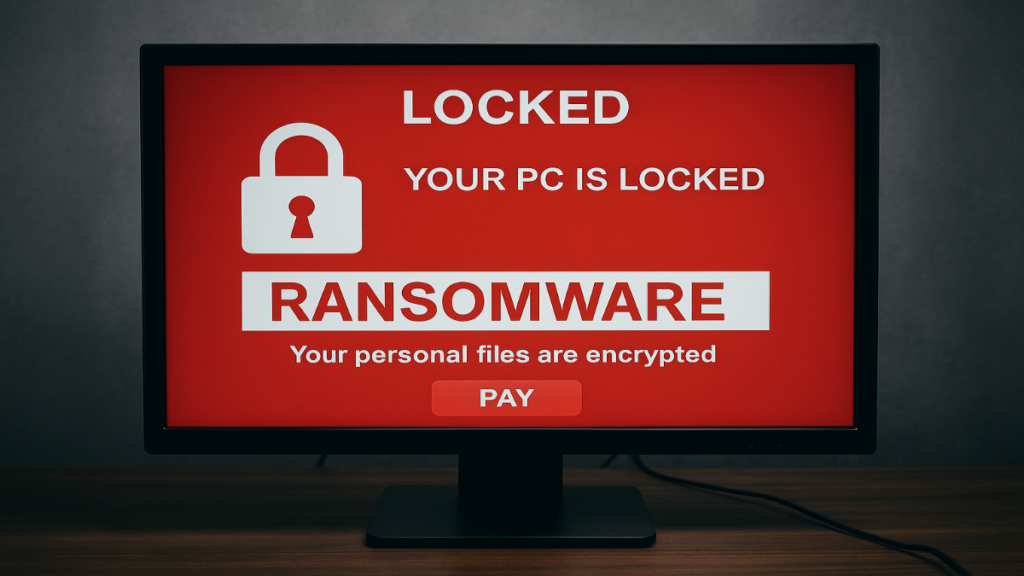What to Do If You Think Your Computer Security Is Compromised by Ransomware
Ransomware is malicious software that encrypts your files or locks you out of your system, then demands payment—usually in cryptocurrency—to restore access. Beyond encryption, some variants also steal data and threaten to publish it online—known as double extortion. Because ransomware uses strong encryption, recovering without the decryption key is nearly impossible. That’s why fast, informed action is vital.
🔍 How to Tell If You’ve Been Infected
| Sign | What It Means |
|---|---|
Files won’t open or show new extensions (.locked, .crypt) | Likely ransomware encryption |
| A ransom message appears | Attackers are demanding payment |
| PC slows down or crashes | Encryption process running |
| Antivirus disabled or missing | Malware interference |
| Network traffic spikes | Possible data exfiltration |
✅ What to Do Immediately
1) Disconnect from All Networks
Unplug Ethernet and disable Wi‑Fi to stop the spread to other systems or drives.
2) Document the Attack
Screenshot ransom messages, filenames, and timestamps. Keep evidence for law enforcement or cyber insurance.
3) Alert Experts
Notify your IT provider or security partner. In the U.S., also report to the FBI Internet Crime Complaint Center (IC3).
4) Identify the Ransomware Type
Use NoMoreRansom.org to check for free decryptors.
5) Remove the Malware
Use trusted tools (e.g., Bitdefender, Malwarebytes, ESET) to eliminate the malicious payload.
6) Restore Clean Backups
Only restore from offline or immutable backups after confirming the environment is clean.
7) Rebuild Securely
Reinstall the OS if needed, patch fully, rotate credentials, and enable MFA everywhere.
🚫 What NOT to Do
- Don’t pay the ransom unless absolutely necessary—there’s no guarantee of recovery.
- Don’t reconnect infected devices to your network.
- Don’t restore from unverified backups.
- Don’t skip reporting and documentation.
- Don’t panic—follow a plan.
🧰 Prevention Tips
- Keep operating systems, apps, and firmware updated.
- Use real-time antivirus and firewalls.
- Train users to recognize phishing and malicious attachments.
- Implement network segmentation and least-privilege access.
- Maintain offline backups and test recovery regularly.
- Enable MFA everywhere.

